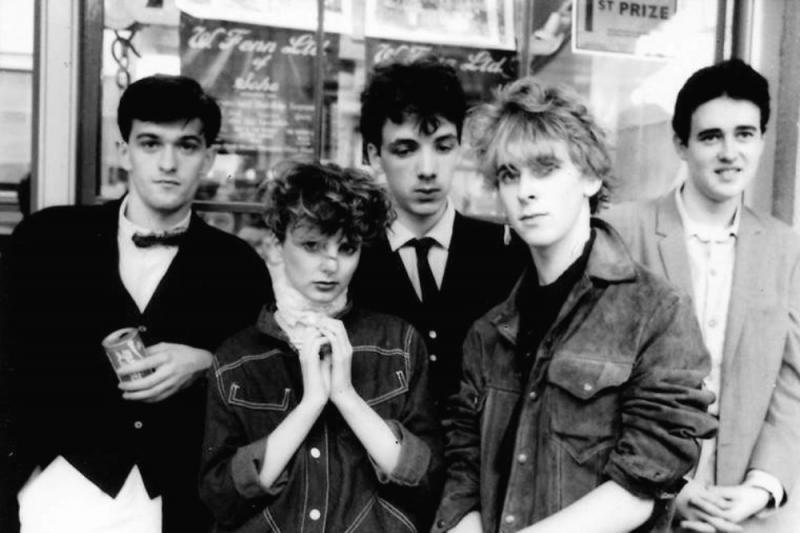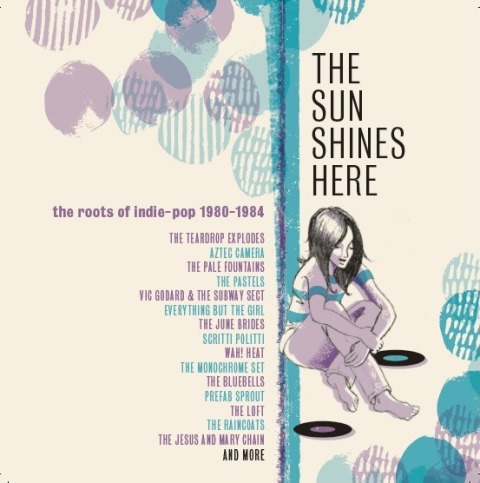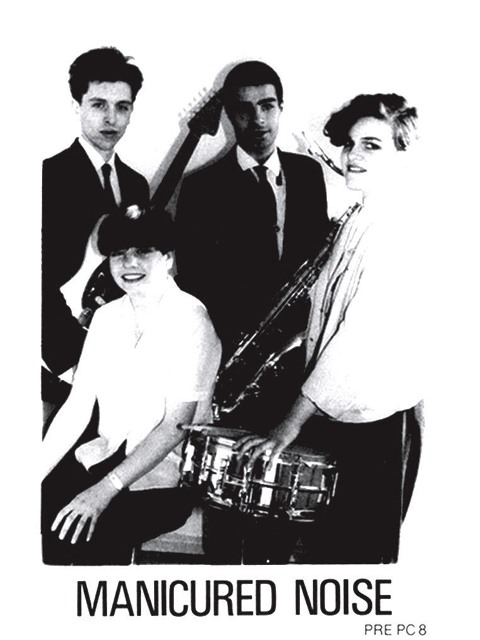Music Reissues Weekly: The Sun Shines Here - The Roots Of Indie-Pop 1980-1984 | reviews, news & interviews
Music Reissues Weekly: The Sun Shines Here - The Roots Of Indie-Pop 1980-1984
Music Reissues Weekly: The Sun Shines Here - The Roots Of Indie-Pop 1980-1984
A great listen, but despite this box set’s title a definition of ‘indie-pop’ remains out of reach

The Sun Shines Here - The Roots Of Indie-Pop 1980-1984 is three-CD set in a clamshell box with 74 tracks. The opener is “Better Scream”, January 1980’s debut single from Wah Heat!
The Sun Shines Here is the follow-up to the 2013 five-disc set Scared To Get Happy (which dealt with 1980 to 1989). When this column looked at Scared To Get Happy, it was noted that “the musical styles covered are diffuse” and that “the nature of indie is partly in the eye of the beholder.” The same comments apply to the more trim but still whopping The Sun Shines Here. While it is a great listen, digs deep and has a broad perspective, it is impossible to get close to what “indie-pop” is.
 A well-known web site has an entry for “indie-pop”. The opening paragraph ties itself in knots. With this set, beyond saying “the tracks on this compilation, just like those on (the 1982 compilation album) Pillows & Prayers, illustrate the vibrancy and the diversity of the music that coalesced into indie-pop,” The Sun Shines Here sidesteps semantic banana skins by otherwise ignoring them. However, it is hard to see what Sixties band The Misunderstood, Kevin Coyne and Quentin Crisp – who were on Pillows & Prayers – have to do with indie-pop.
A well-known web site has an entry for “indie-pop”. The opening paragraph ties itself in knots. With this set, beyond saying “the tracks on this compilation, just like those on (the 1982 compilation album) Pillows & Prayers, illustrate the vibrancy and the diversity of the music that coalesced into indie-pop,” The Sun Shines Here sidesteps semantic banana skins by otherwise ignoring them. However, it is hard to see what Sixties band The Misunderstood, Kevin Coyne and Quentin Crisp – who were on Pillows & Prayers – have to do with indie-pop.
Looseness is endemic in the world of The Sun Shines Here. The use of The Jesus And Mary Chain track as the cut-off isn’t explained in the accompanying booklet’s introductory essay and track-by-track commentary. Similarly, the reason for choosing Wah Heat! as the kick-off isn’t given. This elusiveness does not make what’s collected deficient. But it is hard to see how some of the tracks qualify beyond having an independent-minded sensibility. Disc One includes “Insects” by Altered Images.The B-side of their hit single ‘I Could be Happy”, it was issued by Epic. Great, but is it indie-pop? It's pop, but it is not independent. The same applies to Aztec Camera’s “Jump”, a WEA B-side. Borderline inclusions come from Manicured Noise and Scars, both of whom were on an imprint backed by a major label.
The booklet’s introductory essay sets out the path to this blurriness by outlining an accepted inspirational sequence: Buzzcocks's Spiral Scratch EP, then the Desperate Bicycles and early Scritti Politti. These bands booked the studio, paid for it themselves and put out their own records on their own labels. They did it all themselves and were integral to fomenting the punk/post-punk do-it-yourself outlook. As an umbrella, independent can encapsulate DIY but when a band issues a record on a label not run by themselves the relevance of this foundational trio diminishes.
 Although nothing is said in the booklet to explain The Sun Shines Here’s date range, the first formal independent chart was published in January 1980 – around the time of the set’s earliest tracks. Spizzenergi’s “Where's Captain Kirk?” occupied the top spot. The Dead Kennedys, Delta 5, The Monochrome Set and Scritti Politti were in there too. The last two are on The Sun Shines Here. Fiddler's Dram’s “Day Trip to Bangor” was at number two. This chart was about independent distribution not musical styles; the lack of involvement with a corporate infrastructure was needed to qualify for inclusion. A reissue of Black Sabbath’s “Paranoid” was a Number One independent single in summer 1980. The way the independent charts were compiled meant they were a stylistically broad church. Looking at them is unhelpful to defining indie-pop.
Although nothing is said in the booklet to explain The Sun Shines Here’s date range, the first formal independent chart was published in January 1980 – around the time of the set’s earliest tracks. Spizzenergi’s “Where's Captain Kirk?” occupied the top spot. The Dead Kennedys, Delta 5, The Monochrome Set and Scritti Politti were in there too. The last two are on The Sun Shines Here. Fiddler's Dram’s “Day Trip to Bangor” was at number two. This chart was about independent distribution not musical styles; the lack of involvement with a corporate infrastructure was needed to qualify for inclusion. A reissue of Black Sabbath’s “Paranoid” was a Number One independent single in summer 1980. The way the independent charts were compiled meant they were a stylistically broad church. Looking at them is unhelpful to defining indie-pop.
At the other end of The Sun Shines Here’s time line, The Jesus And Mary Chain would – unwittingly – help shift indie to become a label which did not necessarily mean independent. When they signed to a label funded by Warners, the Mary Chain’s spirit may have been the same for a while but they helped construct the foundations for indie as a meaningless / woolly tag. By mixing major label releases with the barely issued, The Sun Shines Here shows that corporates were messing with what might be seen as indie in 1981 or 1982.
The Sun Shines Here - The Roots Of Indie-Pop 1980-1984 is, on the face of it, a pretty straightforward canter through a period when idiosyncratic bands who realised their pop sensibility might give them a chance at the mainstream existed alongside (albeit wonderful) commercial no-hopers. But what’s not said matters too. And that includes a definition of indie-pop.
- Next week: Sixties garage-rock nirvana with Blow My Mind! The Doré-Era-Mira Punk & Psych Legacy
- More reissue reviews on theartsdesk
- Kieron Tyler’s website
Explore topics
Share this article
The future of Arts Journalism
You can stop theartsdesk.com closing!
We urgently need financing to survive. Our fundraising drive has thus far raised £49,000 but we need to reach £100,000 or we will be forced to close. Please contribute here: https://gofund.me/c3f6033d
And if you can forward this information to anyone who might assist, we’d be grateful.

Subscribe to theartsdesk.com
Thank you for continuing to read our work on theartsdesk.com. For unlimited access to every article in its entirety, including our archive of more than 15,000 pieces, we're asking for £5 per month or £40 per year. We feel it's a very good deal, and hope you do too.
To take a subscription now simply click here.
And if you're looking for that extra gift for a friend or family member, why not treat them to a theartsdesk.com gift subscription?
more New music
 'Vicious Delicious' is a tasty, burlesque-rockin' debut from pop hellion Luvcat
Contagious yarns of lust and nightlife adventure from new pop minx
'Vicious Delicious' is a tasty, burlesque-rockin' debut from pop hellion Luvcat
Contagious yarns of lust and nightlife adventure from new pop minx
 Music Reissues Weekly: Hawkwind - Hall of the Mountain Grill
Exhaustive box set dedicated to the album which moved forward from the ‘Space Ritual’ era
Music Reissues Weekly: Hawkwind - Hall of the Mountain Grill
Exhaustive box set dedicated to the album which moved forward from the ‘Space Ritual’ era
 'Everybody Scream': Florence + The Machine's brooding sixth album
Hauntingly beautiful, this is a sombre slow burn, shifting steadily through gradients
'Everybody Scream': Florence + The Machine's brooding sixth album
Hauntingly beautiful, this is a sombre slow burn, shifting steadily through gradients
 Cat Burns finds 'How to Be Human' but maybe not her own sound
A charming and distinctive voice stifled by generic production
Cat Burns finds 'How to Be Human' but maybe not her own sound
A charming and distinctive voice stifled by generic production
 Todd Rundgren, London Palladium review - bold, soul-inclined makeover charms and enthrals
The wizard confirms why he is a true star
Todd Rundgren, London Palladium review - bold, soul-inclined makeover charms and enthrals
The wizard confirms why he is a true star
 It’s back to the beginning for the latest Dylan Bootleg
Eight CDs encompass Dylan’s earliest recordings up to his first major-league concert
It’s back to the beginning for the latest Dylan Bootleg
Eight CDs encompass Dylan’s earliest recordings up to his first major-league concert
 Ireland's Hilary Woods casts a hypnotic spell with 'Night CRIÚ'
The former bassist of the grunge-leaning trio JJ72 embraces the spectral
Ireland's Hilary Woods casts a hypnotic spell with 'Night CRIÚ'
The former bassist of the grunge-leaning trio JJ72 embraces the spectral
 Lily Allen's 'West End Girl' offers a bloody, broken view into the wreckage of her marriage
Singer's return after seven years away from music is autofiction in the brutally raw
Lily Allen's 'West End Girl' offers a bloody, broken view into the wreckage of her marriage
Singer's return after seven years away from music is autofiction in the brutally raw
 Music Reissues Weekly: Joe Meek - A Curious Mind
How the maverick Sixties producer’s preoccupations influenced his creations
Music Reissues Weekly: Joe Meek - A Curious Mind
How the maverick Sixties producer’s preoccupations influenced his creations
 Pop Will Eat Itself, O2 Institute, Birmingham review - Poppies are back on patrol
PWEI hit home turf and blow the place up
Pop Will Eat Itself, O2 Institute, Birmingham review - Poppies are back on patrol
PWEI hit home turf and blow the place up
 'Fevereaten' sees gothic punk-metallers Witch Fever revel in atmospheric paganist raging
Second album from heavy-riffing quartet expands sonically on their debut
'Fevereaten' sees gothic punk-metallers Witch Fever revel in atmospheric paganist raging
Second album from heavy-riffing quartet expands sonically on their debut
 theartsdesk Q&A: Soft Cell
Upon the untimely passing of Dave Ball we revisit our September 2018 Soft Cell interview
theartsdesk Q&A: Soft Cell
Upon the untimely passing of Dave Ball we revisit our September 2018 Soft Cell interview

Add comment